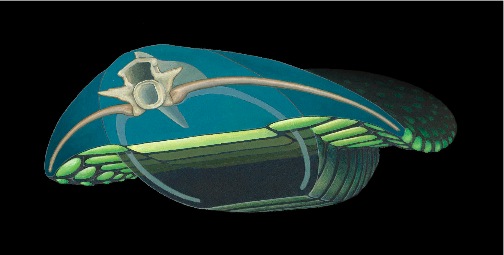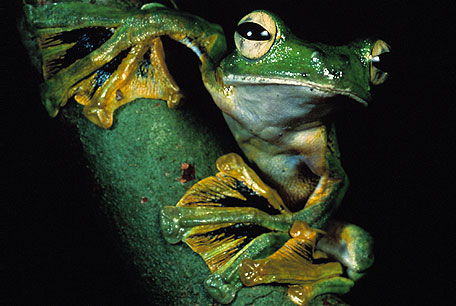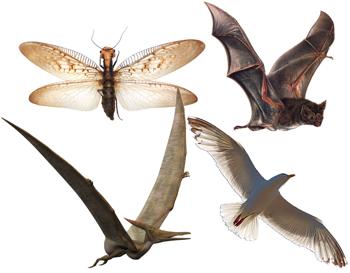Certain species of the “flying” snake are able to glide as far as 330 feet in the air. What makes them so aerodynamic and gives them such controlled flight has been interesting to watch and inspiring to the area of biomimetics.
One of the most important factors of the snake’s ability to glide is its ability to flatten its body by sucking in its stomach and ribs. This causes the snake’s body to flatten and mimic a concave wing that traps air.
An analysis of the snake’s gliding behavior reveals how it utilizes this flattened body. After launching itself off a tree, the snake thrashes so that it can reduce its speed from 6 m/s to a terminal velocity of 4 m/s . It also points its head upwards and its tail downwards to create an angle of attack from 18 degrees to 32 degrees. The size of the snake matters too. Researchers from the University of Chicago discovered that body length and wave amplitude of the undulations were important in determining flight behavior. Small snakes were better glide longer distances than larger ones. These behaviors represent factors that explain how the snake creates a lift force greater than its weight as proven by:
L = (1/2) CL ρ V2 S
where CL=lift coefficient, ρ= air density, V=velocity, and S=surface area
Now that we understand how the snake can generate lift, we can see how the flying snake is able to control its gliding. In order to steer, the snake uses lateral undulation (the S-shaped movement of snakes). This motion also generates more lift as it changes the air pressure above the snake, thereby creating an upward force.
At the end of the video we see that the snake is able to change direction completely while it is in midair. With the information from above, it seems pretty reasonable that the snake can do that now. It just so happens that the snake thrashes to manipulate its angle of attack and surface area to slow down. Then it undulates to create its own upward force and whips its tail for propulsion.
References:
Chrysopelea. Wikipedia. <http://en.wikipedia.org/wiki/Chrysopelea>
Flying ophidians! Physicists uncover how snakes soar between trees. Scientific American. <http://blogs.scientificamerican.com/observations/2010/11/24/flying-ophidians-physicists-uncover-how-snakes-soar-between-trees-video/>
How Snakes Can “Fly”. National Geographic. <http://news.nationalgeographic.com/news/2010/11/101124-flying-snakes-fly-science-darpa-dod-socha/>
University of Chicago researchers reveal secrets of snake flight. University of Chicago. <http://www.uchospitals.edu/news/2005/20050513-snake.html>



